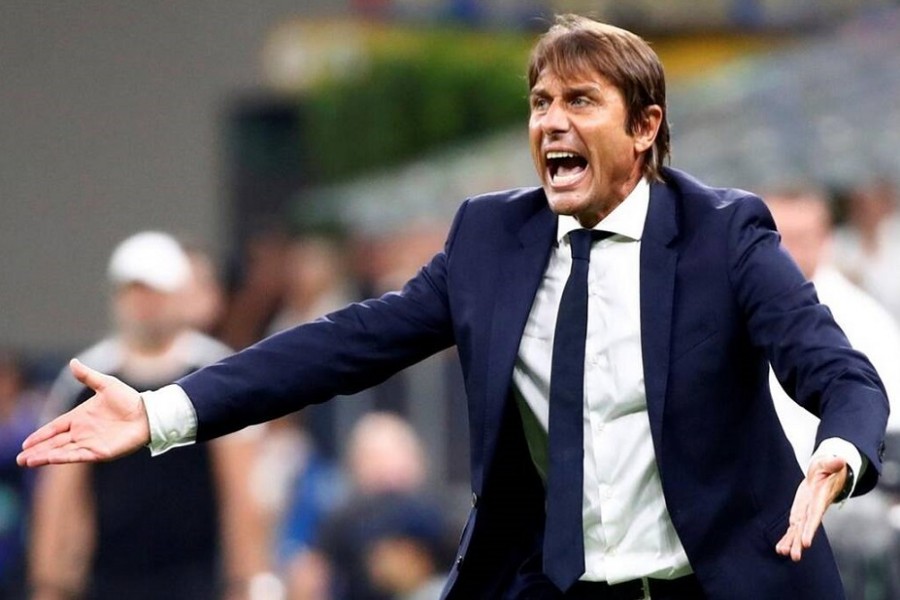
Published :
Updated :

Antonio Conte is en route to dethrone Juventus by clinching Inter Milan's first Serie A title since the unprecedented 2009-10 season, when the team won the continental treble as the very first Italian team. Conte is all set to end Juventus’s monopoly in the Italian league which he himself initiated back in 2011-12 season by winning the scudetto.
However, Juventus are almost out of the title race and Inter under Conte have been consistent enough to secure the honour this season. Conte, as a manager, is well known for pulling teams out of a slump and winning domestic titles with them-- something which he has done at Juventus and Chelsea, and highly likely to repeat the feat at Inter.
Nevertheless, Conte has failed to replicate his success in the UEFA Champions League (UCL), the most prestigious club competition of Europe. Reaching quarter finals with Juventus remains his best performance in the UCL. So, what is the issue with UCL? Is he missing the lucky charm which UCL winning managers usually have?
Lack of rotation
Antonio Conte is known for having a fixed squad. He heavily relies on the players of the running squad and is seldom seen to rotate them. His old school Italian football education makes him use a modified version of the famous Catenaccio, where a back 3 is utilised with 2 wingbacks playing in wide positions, 3 midfielders and 2 out and out strikers.
One of the three center backs in the formation has a free role in his team and often operates as the secondary playmaker in case the main playmaker of the team is heavily marked. However, due to relying on players having specific skills, Conte often doesn’t have many options at his disposal which affects him badly in Europe.
Tactical rigidity
Unlike Zinedine Zidane, who is known for tweaking his formations and tactics according to the strength of his opponents, Conte generally doesn’t drift away from his basics. He almost always uses his trademark 3-5-2 /5-3-2 formation and has a very definitive tactical approach to the way his team plays.
His teams are known for being very solid defensively and having a counter-attacking approach to their games. That's why Conte prefers very fast wingbacks on both sides of the pitch. Such predictability of his approach is often exploited in big games.
Although he used a slightly different version of his usual formation in the form of 3-4-3 in Chelsea due to the presence of wingers like Hazard and Pedro, his basic philosophy remains the same which in many ways has backfired in the UCL.
Player fatigue
Antonio Conte in his playing days was a very hardworking central midfielder whose main attributes were his high work rate and relentless energy. Somehow, as a manager, he has a knack for picking up players who are very industrious and efficient both with and without the ball.
A ubiquitous feature of all the teams that Conte managed has been highly, aggressive pressing up front in order to gain possession. To improve the work rate of the players, Conte actively arranges training sessions which are rigorous and as per Gary Cahill, who played under Conte in Chelsea, these were some of the hardest training sessions that he had to endure.
And a common feature of the high pressing teams is they get fatigued and lose composure at the second half of any season. This high energy football results in tiredness and often injuries for players as Conte repeatedly fails to channel his domestic form in the European competitions.
Singular focus
Antonio Conte after his tenure with smaller Italian outfits like Arezzo, Bari, Siena and Atalanta have always been employed by teams that were desperate to get hold of the league after a long time. For example, when he took over Juventus, the team was not in any European competition which made the league his primary focus.
Although Chelsea won the Premier League in the 2014-15 season, they were placed 10th in the league in the following season which resulted in a short-term crisis in the club. After taking the managerial duty Conte turned things around and won the league in his very first season. Similar to the situation of Juventus, he didn’t have any European competition to focus on.
Antonio Conte is rightly considered to be one of the best managers in the world. Apart from his success at club level, he was duly credited for taking a largely average Italian Team to the Quarterfinals of Euro 2016 only to be narrowly defeated in penalty shootouts.
He is also renowned for modernising the classical Italian Catenaccio. Despite having such a glittering managerial career, his lack of European success remains the only dark stain. It will be quite interesting to see if he can turn this very thing around in future.
Rassiq Aziz Kabir is a student of Economics at the University of Dhaka.


 For all latest news, follow The Financial Express Google News channel.
For all latest news, follow The Financial Express Google News channel.